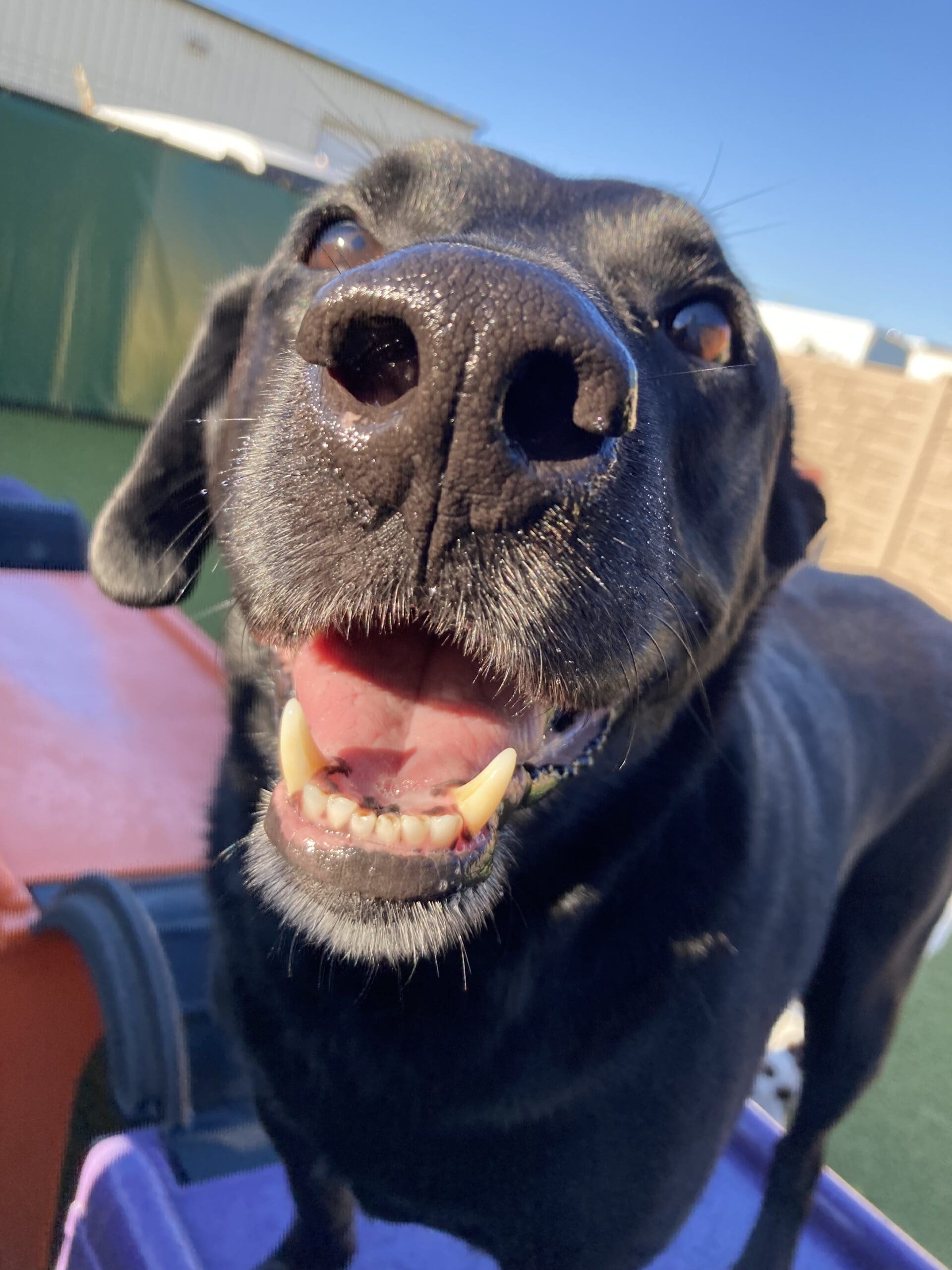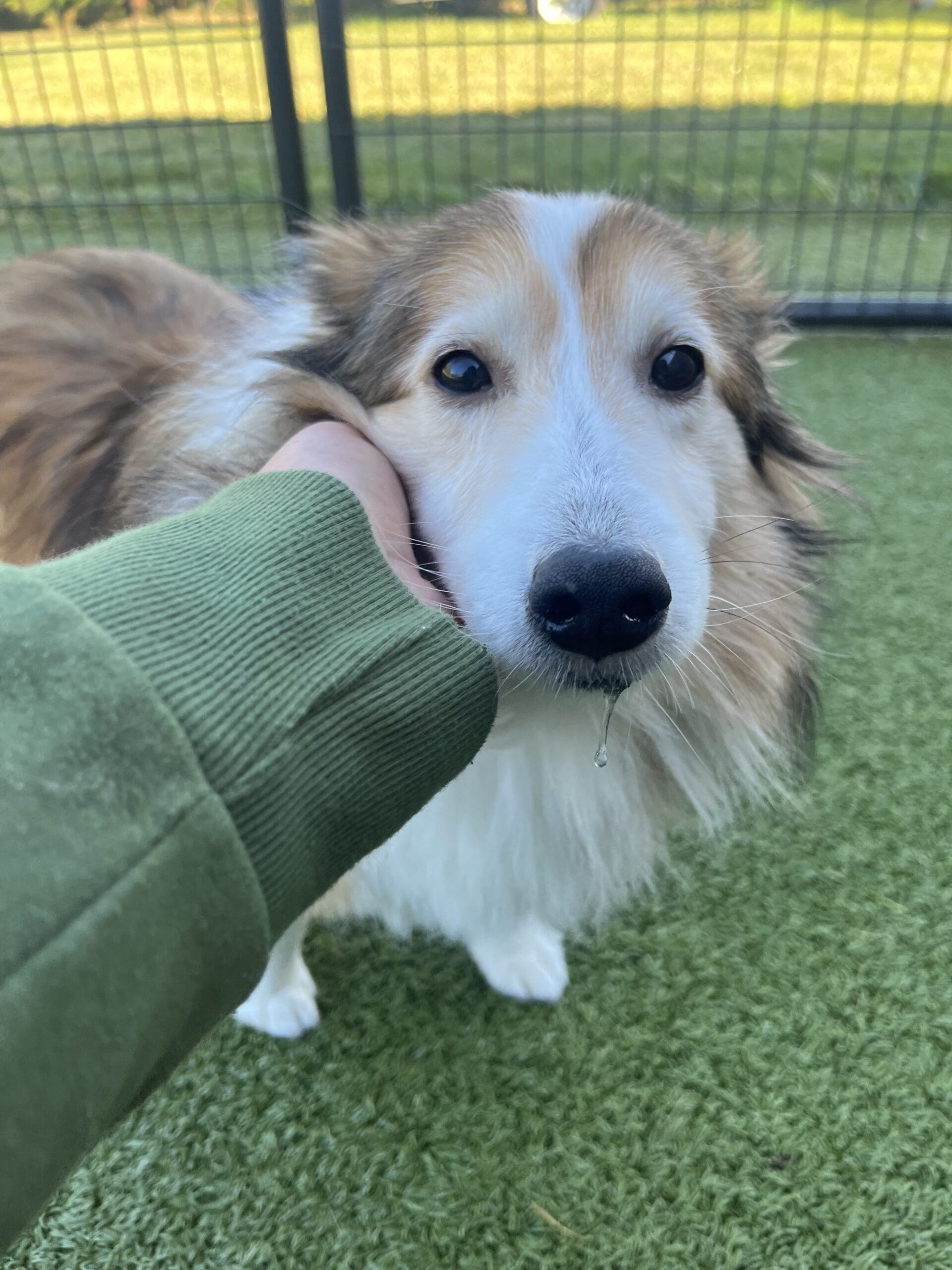
Did you know obesity can shorten your dog’s life span by 2 ½ years?
Over half of all dogs are overweight or obese, according to a 2020 Banfield Pet Hospital study. However, many pet owners are unaware that their best buddy could stand to lose a few pounds. Maintaining or achieving optimal weight for your pet can reduce chronic pain, improve quality of life, and even extend their lives.
Other problems associated with obesity include a higher-than-average cancer risk, high blood pressure, kidney disease, torn knee ligaments, diabetes, insulin resistance, cardiovascular disease as well as many other maladies.
Obesity is also a precursor to osteoarthritis later in life. To compound the problem, obesity leads to decreased mobility and increased difficulty exercising.
How do I know if my dog is overweight?
Look at your dog from an aerial view. A healthy weight dog will show a tapering at the waist in front of the hips and behind the chest wall like an hourglass. You should also be able to feel the ribs but not see them. For a more in-depth weight assessment, see the Body Conditioning Score (BCS) chart provided by the Association Pet Obesity Prevention (AOPA): https://static1.squarespace.com/static/6425ec5d33eaaa634113b2d4/t/6447ea2befce9313c457fae6/1682434605353/APOP+BCS+DOG+CHART+%281%29.pdf
Solutions for obesity in dogs are the same as for humans. It all boils down to diet and exercise. Even losing a small amount of weight dramatically increases mobility and improves quality of life. According to the APOP’s guidelines, safe weight loss in dogs is 3 to 5% body weight loss per month.
You don’t have to forgo tasty treats for your pal. Use fruits and vegetables* like green beans, carrots, or blueberries, and watermelon for treats to avoid the higher calorie snacks such as milk bones, pig ears, or other manufactured dog treats. As an added bonus, fruits and vegetables are high in fiber and may keep your pup feeling full longer. You can even make your own healthy dog treats at home by mixing peas and carrots into a low-fat, low-sodium chicken broth and freezing them in ice cube trays. For a sweet treat, try adding some blueberries to a low-fat, no-added-sugar yogurt and freezing them in ice cube trays. Just double-check the yogurt label to make sure it does not contain artificial sweeteners, including acesulfame-K, aspartame, neotame, saccharin, and sucralose, as these can be dangerous for your dog.

Food Recommendations on the back of dog food bags are written as a general guideline for average-weight dogs but do not consider the breed, age, neuter/spay status, or a pet’s lifestyle. Consider that a 40-pound dog who is in his senior years will likely need fewer calories than a 40-pound dog who is young and active. The breed also plays a role in how many calories a dog needs. Consider the energy level difference between a dachshund versus a Jack Russel.

Exercise has many health benefits for humans as well as our furry friends. In addition to weight reduction, exercise has been shown to reduce anxiety, build better muscle tone, and improve energy levels. Exercise can also help alleviate destructive behaviors such as chewing on furniture or entering the garbage can. Most young, healthy pets are fine getting started with an exercise program without any problems; some older or sedentary dogs may have to enter into exercise slowly and build stamina. There are many types of exercise, including walking, playing fetch, swimming, and playing with friends in dog parks or signing up for doggy daycare.
Before starting any weight management and exercise program, your dog should have a vet visit to rule out any diseases, including issues that may make it more challenging to lose weight, such as thyroid disease. It is important to discuss the weight loss regime such that it can be done in a healthy, gradual manner. Your vet can work with you to individualize a healthy diet and exercise plan for your dog.
Additional resources for pet obesity, including Body Conditioning Scoring (BCS), weight ranges for healthy pets, weight loss information, and other helpful articles, are available at the APOP website https://www.petobesityprevention.org.
*Certain fruits and vegetables are poisonous for dogs, including avocadoes, grapes, raisins, onions, garlic, chives, leeks, mushrooms, raw potatoes, rhubarb, tomatoes, eggplant, uncooked legumes and fruit pits. For a more complete list of fruits and vegetables dogs can and can’t eat, go to https://pupford.com/vegetables-fruits-dogs-can-cant-eat/

